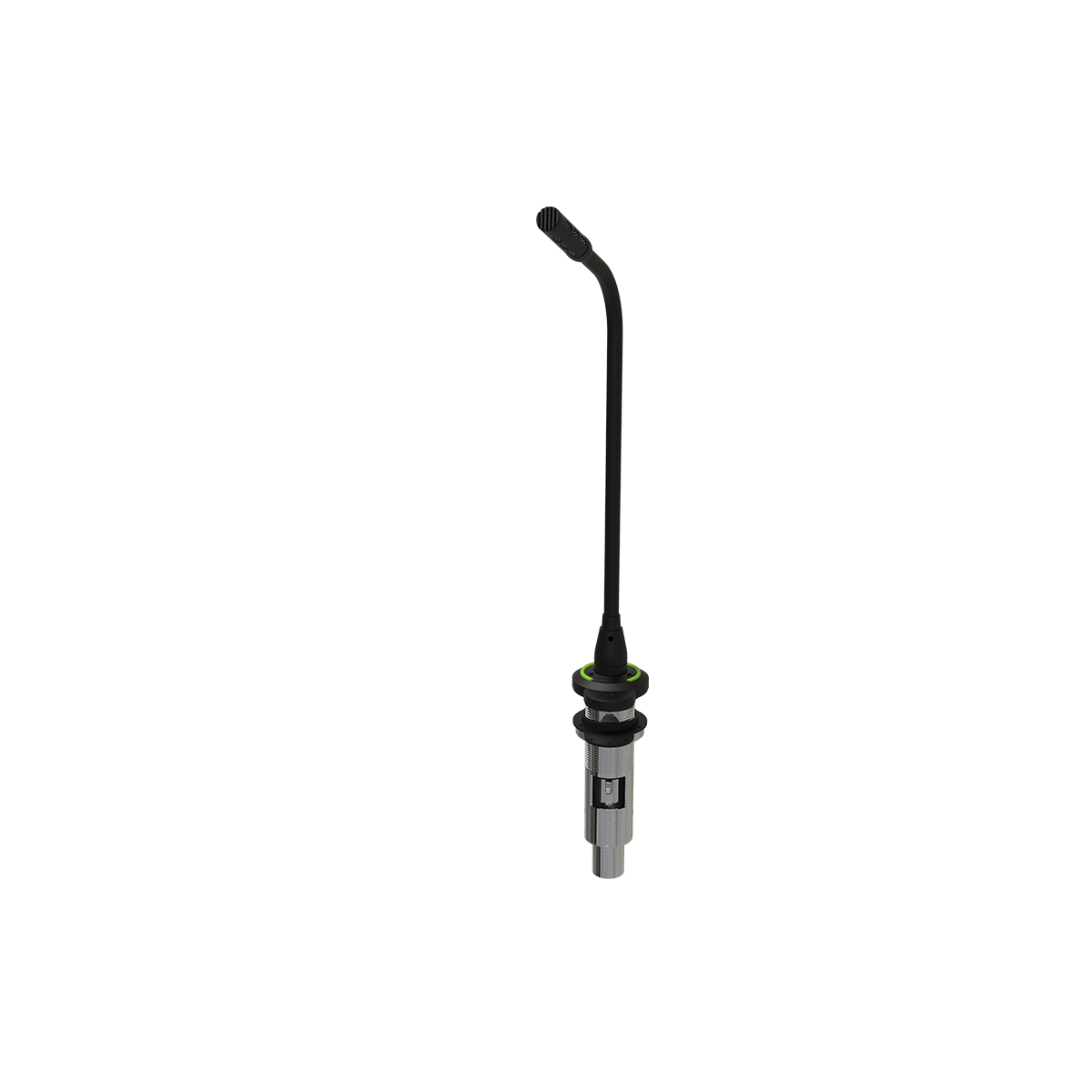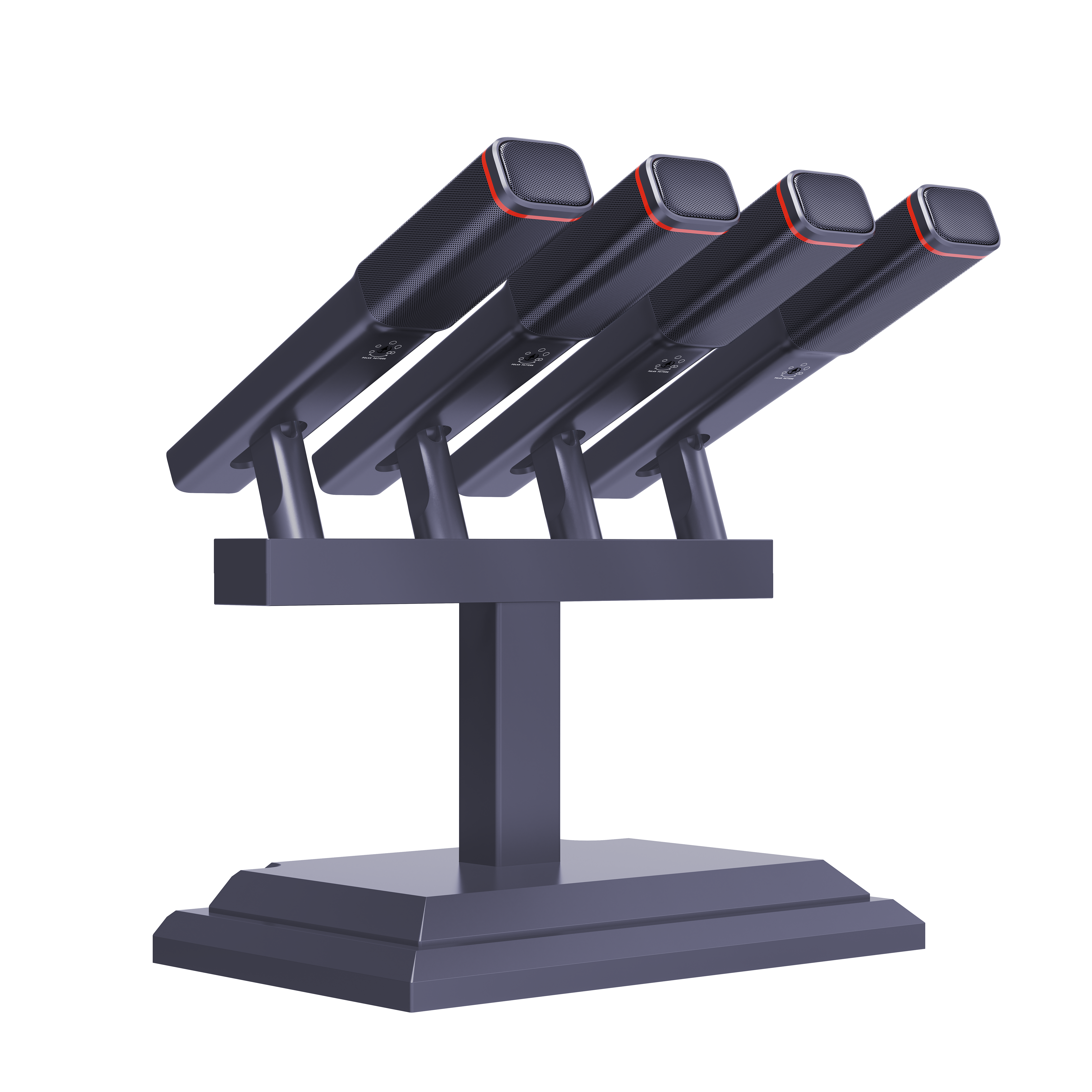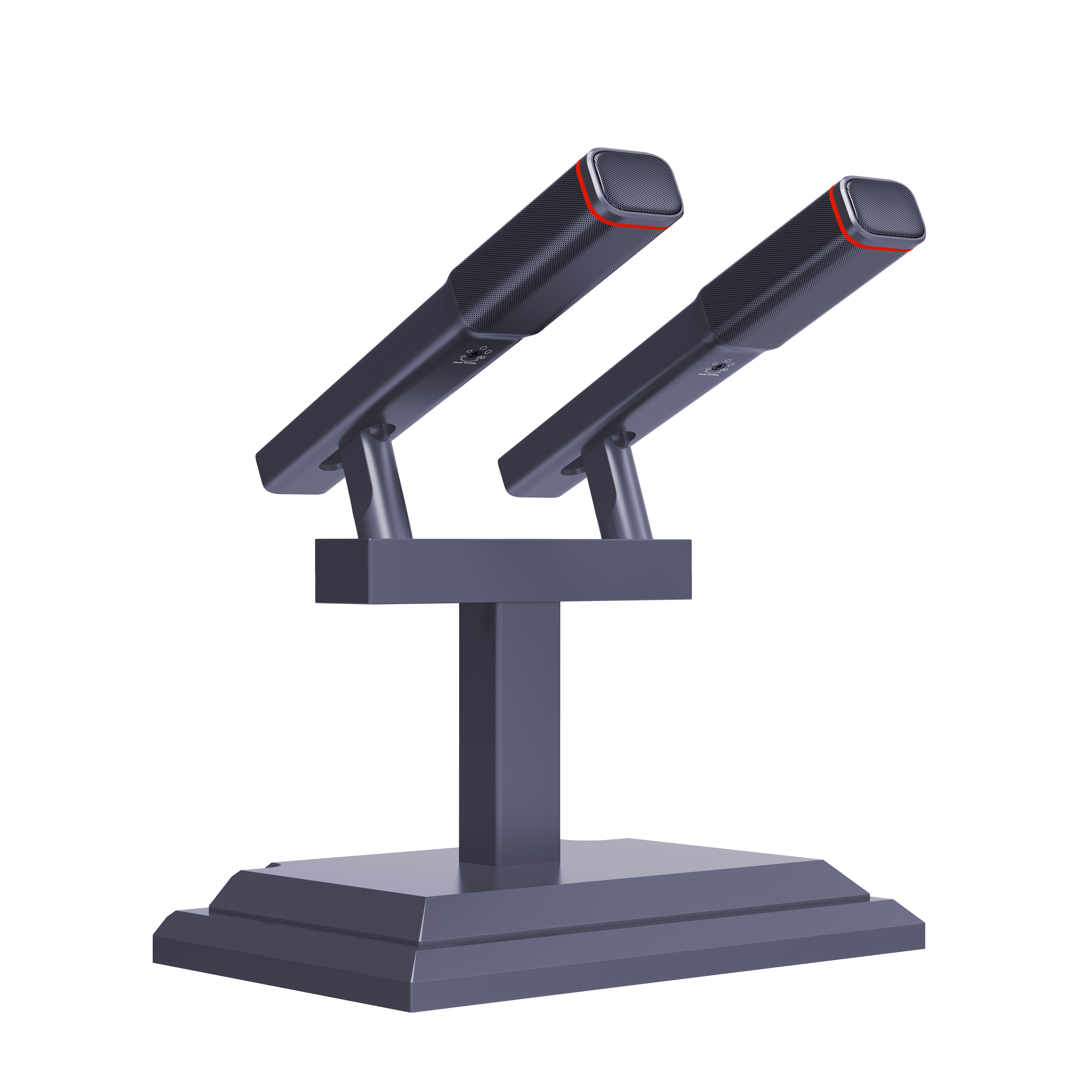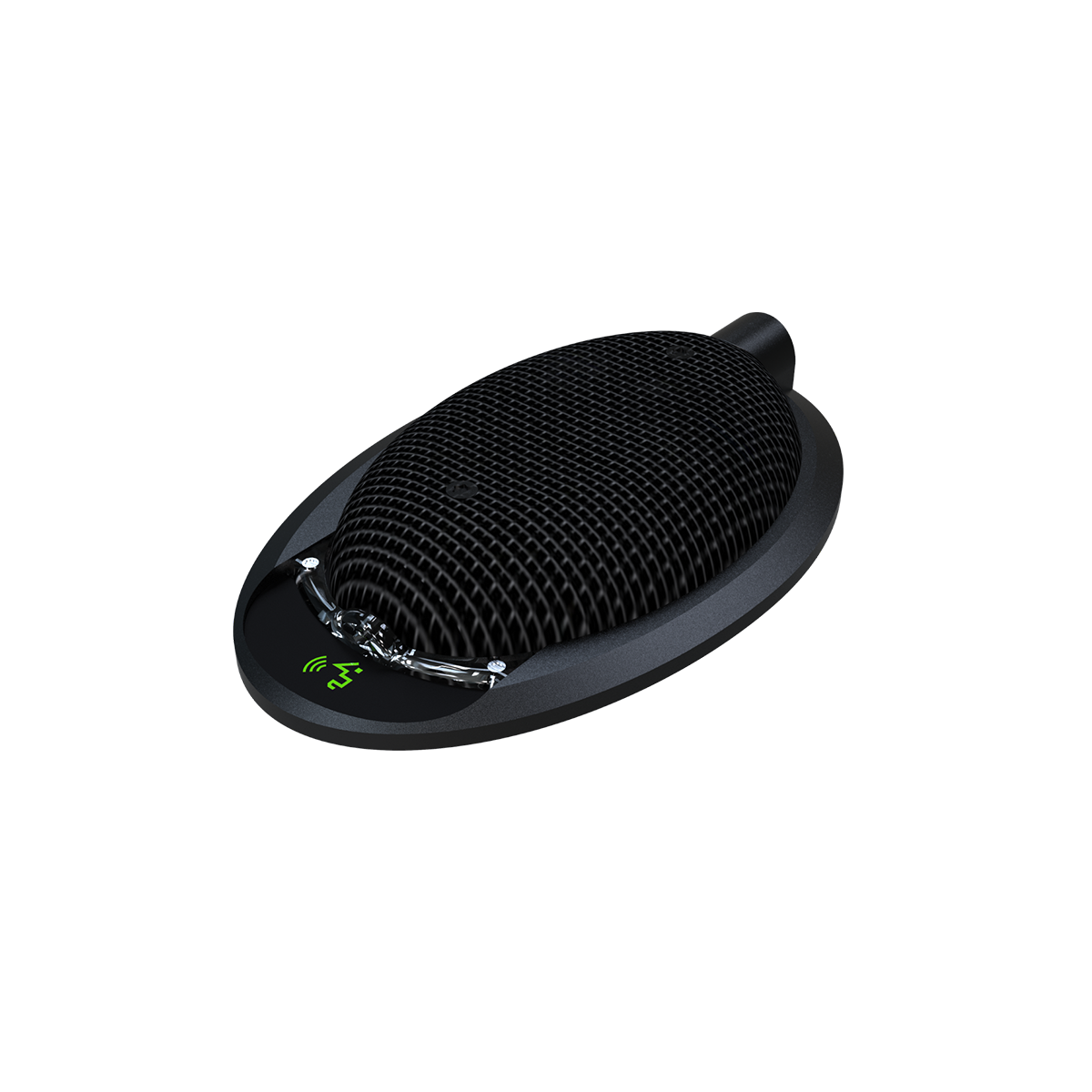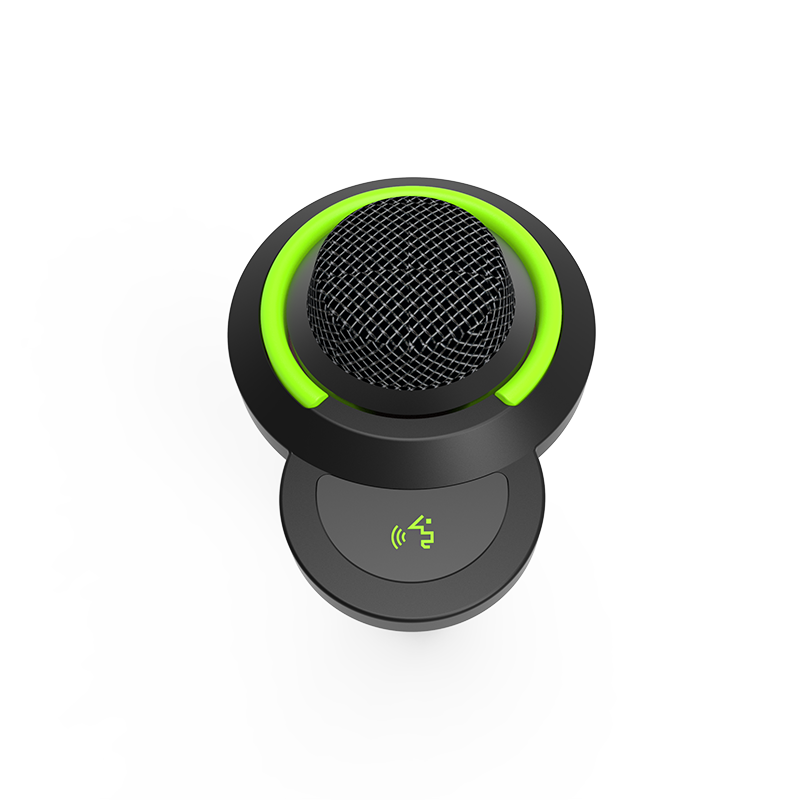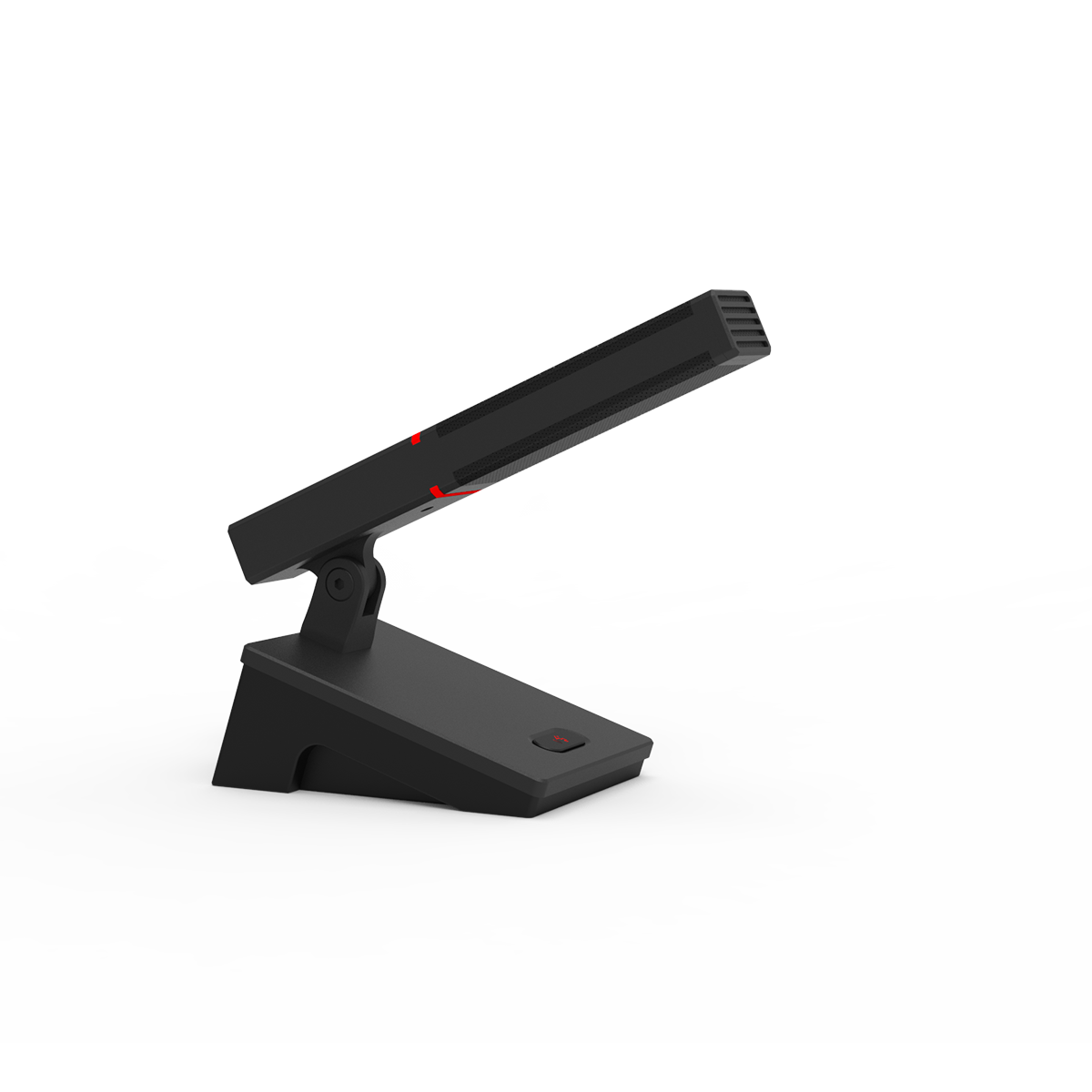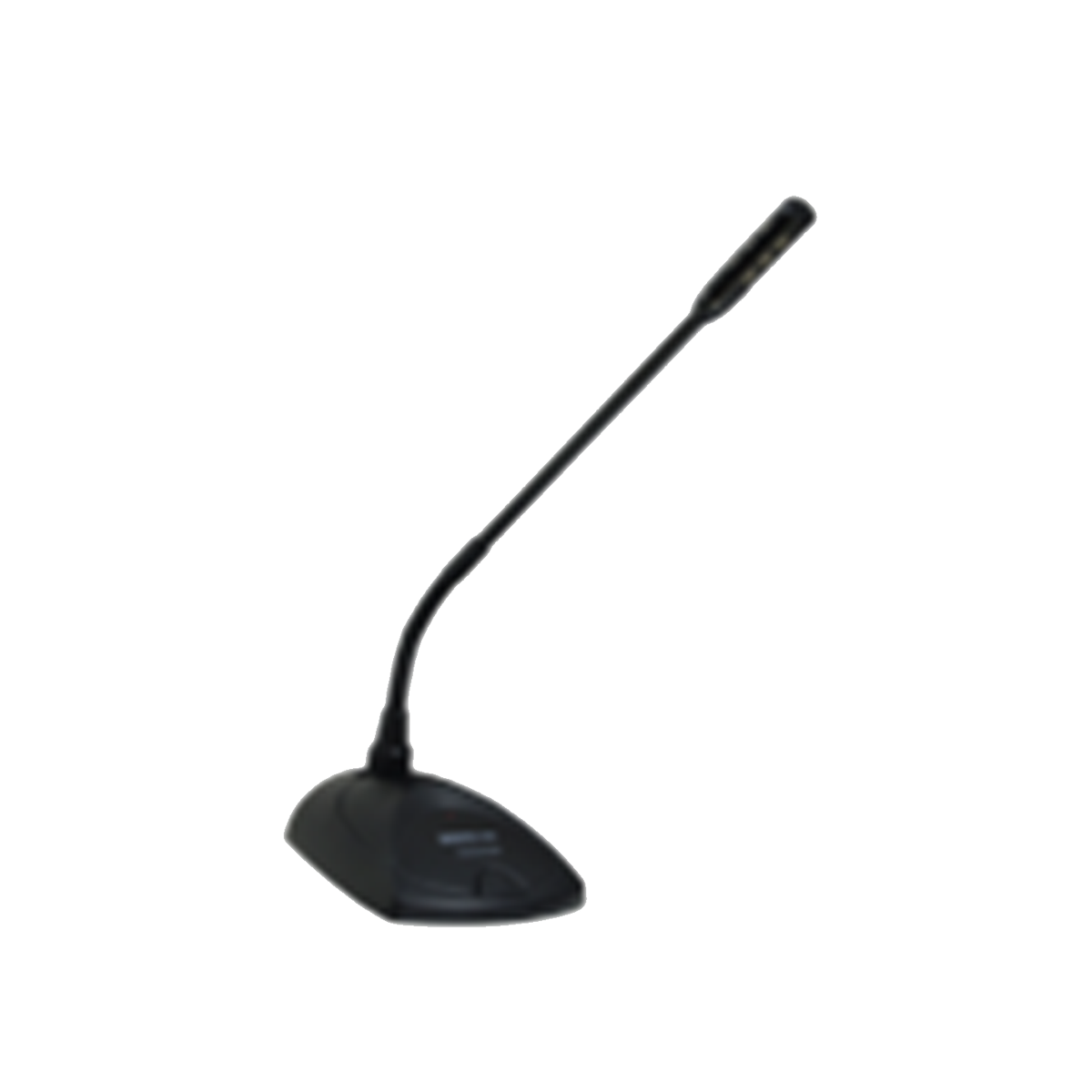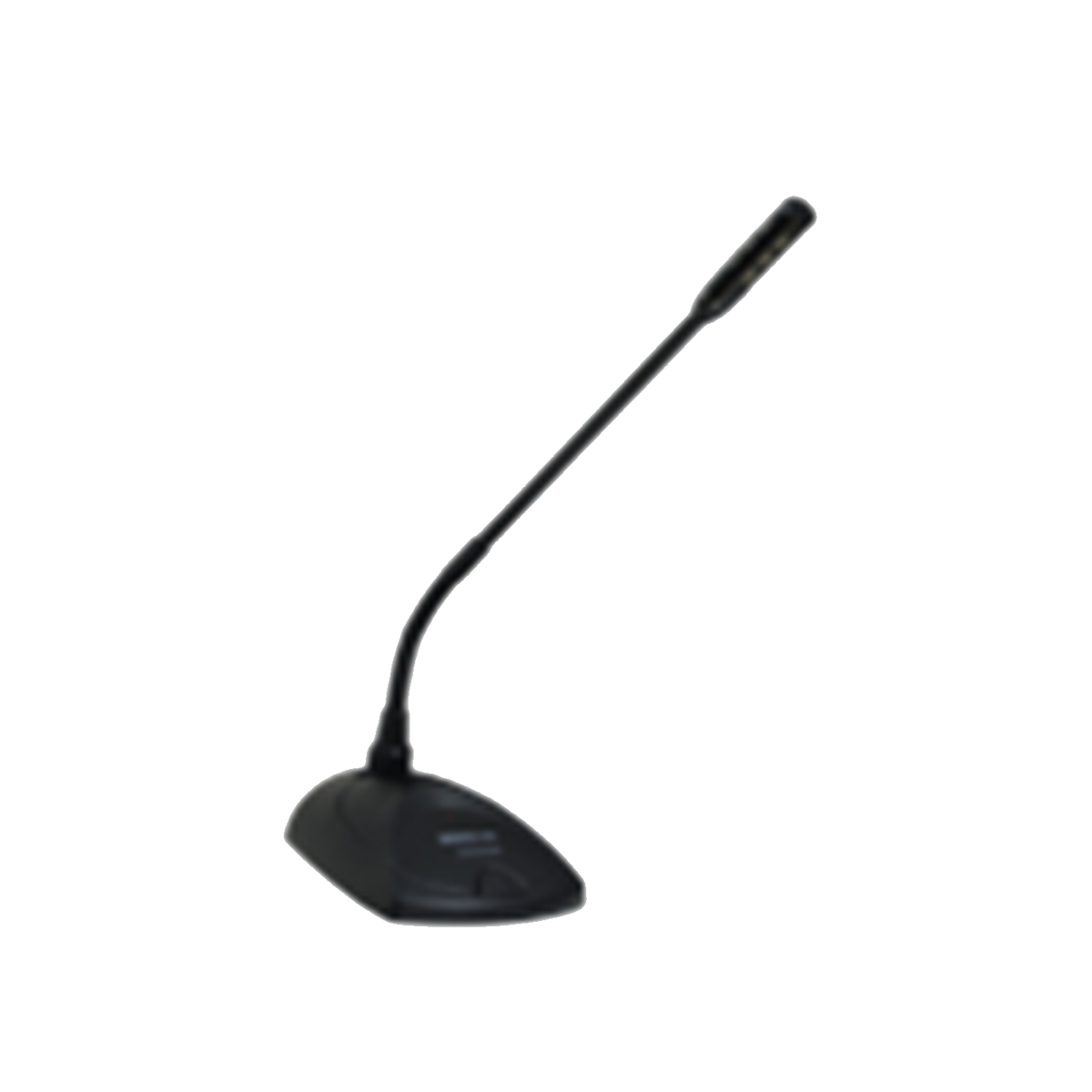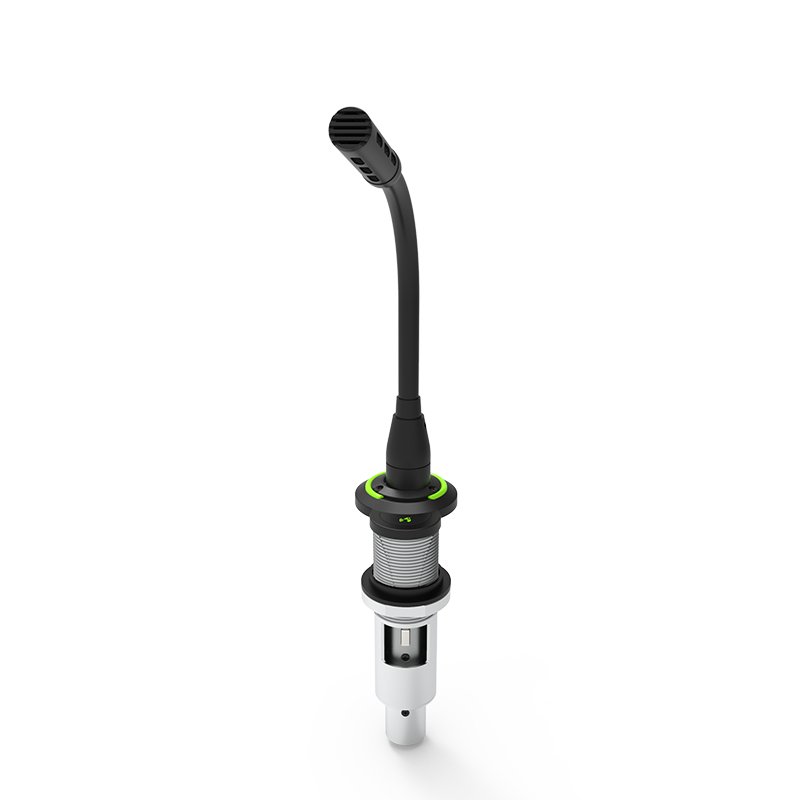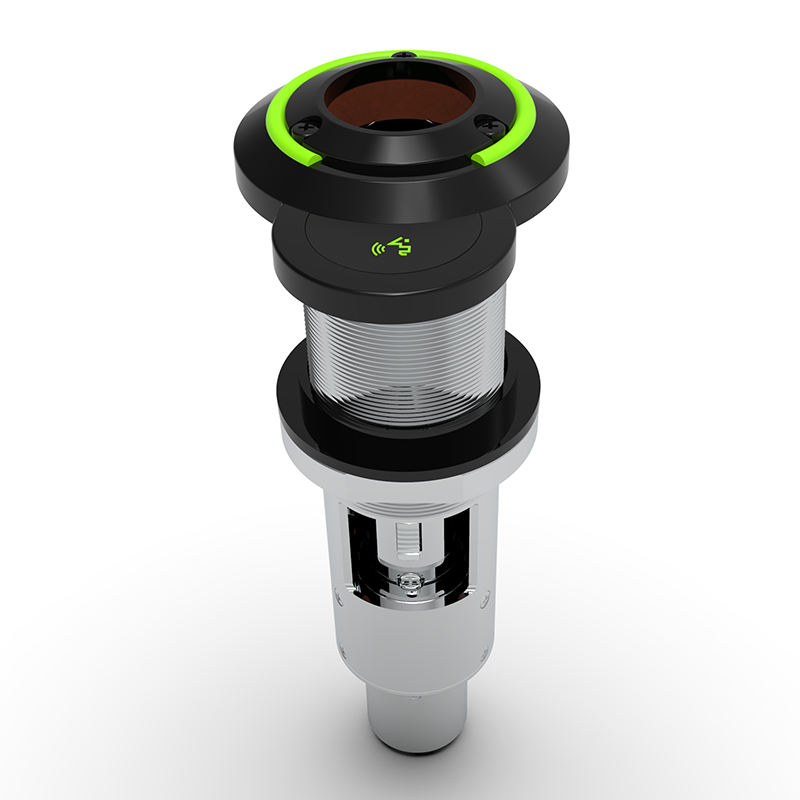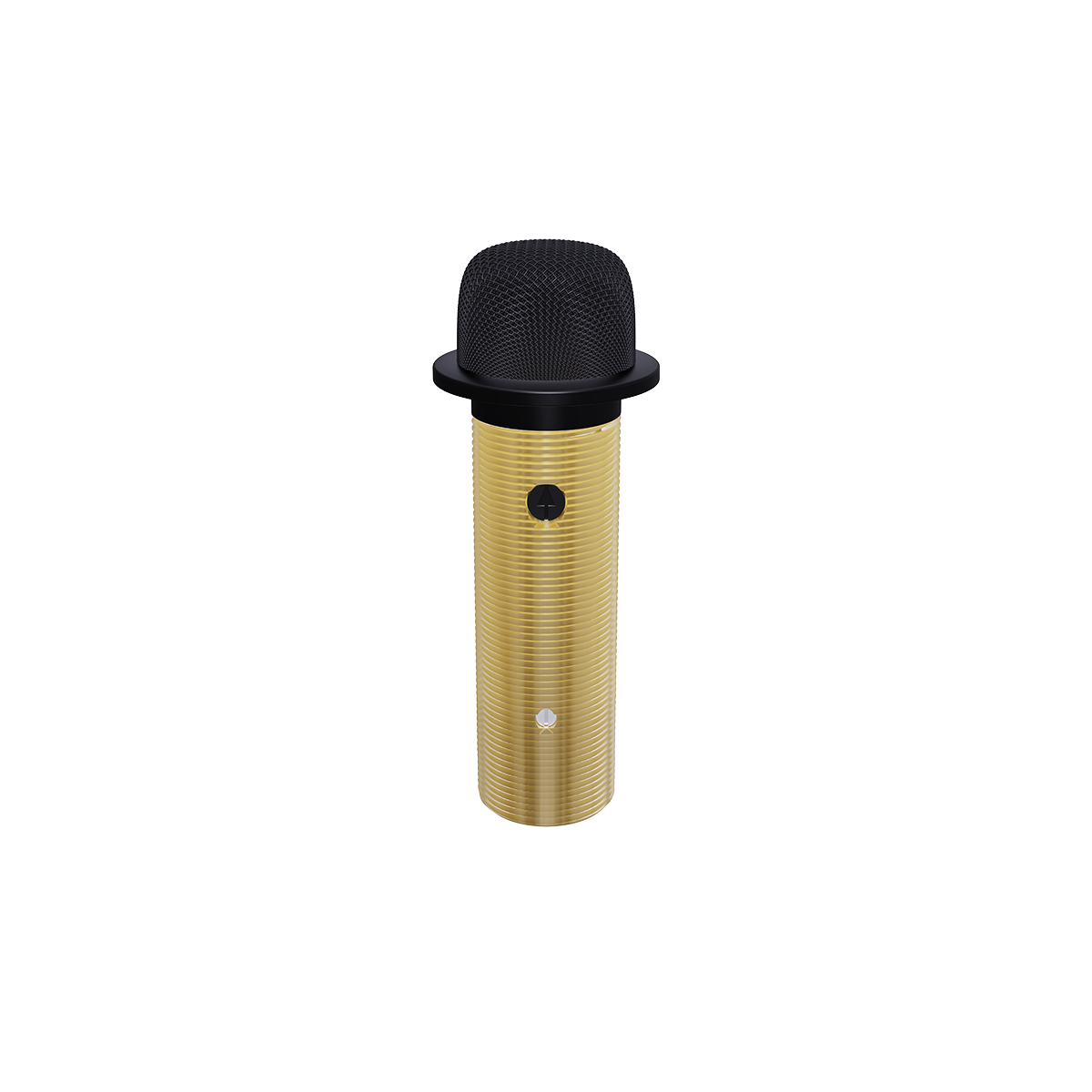Embedded Microphone Base Unit
Product Features
• Exquisite and elegant embedded structure, ergonomic and modern.
• Embedded microphone socket compatible with button-type interface microphones and gooseneck microphones to form a complete conference microphone setup.
• Touch-sensitive microphone on/off button.
• Professional 3-core Canon female connector with XLR output.
• Supports 48V phantom power operation.
• Automatic microphone locking when inserted prevents accidental unplugging or noise; manual release is required for removal.
• Anti-vibration rubber isolation ring and metal fixing ring (for gooseneck microphones) reduce vibration or impact noise from the mounting surface.
Technical Paremeters
Frequency Response: 40–20kHz
Mute Attenuation: <50 dB @1kHz/Pa
LED Display: Green for working; off for mute
Phantom Power Supply: 24–52V
Switch: Light touch control
Base Weight: 150g
Input Terminal: Professional 3-core XLR female connector (5-pin)
Output Terminals: 3-core XLR male connector
Standard Configuration: 1 pair anti-vibration rubber; 1 metal fixing ring
Hole Size: 35mm diameter
Embedded Microphone Pole
Product Features
• Exquisite embedded structure with high concealment.
• Supports five polar patterns: Omni-Directional, Cardioid, Super Cardioid, Wide Cardioid, Figure-of-Eight.
• All-metal shell, resistant to RF interference.
• Professional 5-core Canon female output.
• Supports 48V phantom power operation.
• Compatible with IT80A embedded microphone base.
• Anti-vibration rubber isolation ring reduces vibration or impact noise from the installation surface.
• Built-in windshield, no additional handling required.
Technical Paremeters
Microphone Type: Cardioid Condenser
Polar Patterns: Omni-Directional, Cardioid, Super Cardioid, Wide Cardioid, Figure-of-Eight
Power Consumption: 2W
Impedance: 120Ω
Frequency Response: 90Hz–17kHz
Maximum SPL: 120dB @1% T.H.D., 1kHz
Power Requirements: 24V / 48V, 4mA
Sensitivity: -32dBV (25mV) @1Pa
Pole Dimensions: 415mm
Pole Weight: 150g
Advantage
In an era of increasing complexity, analog microphones remain the gold standard for straightforward, dependable performance. Here’s why they are often the smarter choice:
Ultimate Reliability & Stability:
No Software, No Problems: Analog mics operate independently of networks, software, or operating systems. They are immune to IP conflicts, firmware bugs, cyber threats, or network latency, guaranteeing uninterrupted operation in critical situations.
Pure, Real-Time Audio Transmission:
Zero-Latency Performance: The signal travels instantly from the mic to the mixer. This is non-negotiable for live presentations, musical performances, and any scenario where perfect audio-video sync is essential.
Remarkable Cost-Effectiveness:
Lower Initial Investment: Analog systems provide high-quality sound at a significantly lower cost per unit compared to networked alternatives.
Reduced Operational Overhead: They require no IT expertise to set up or maintain, saving on training and support costs.
Effortless Plug-and-Play Integration:
Universal Compatibility: With standard XLR outputs, they connect seamlessly to virtually any existing sound system, mixer, or amplifier worldwide. Setup is as simple as plugging in a cable.
Proven, Time-Tested Technology:
Battle-Tested Performance: The technology is mature and well-understood. What you get is a robust, predictable, and easily troubleshootable tool that just works, day in and day out.
In short, for applications where rock-solid reliability, simplicity, and real-time performance are paramount, analog microphones offer an unbeatable value proposition.



